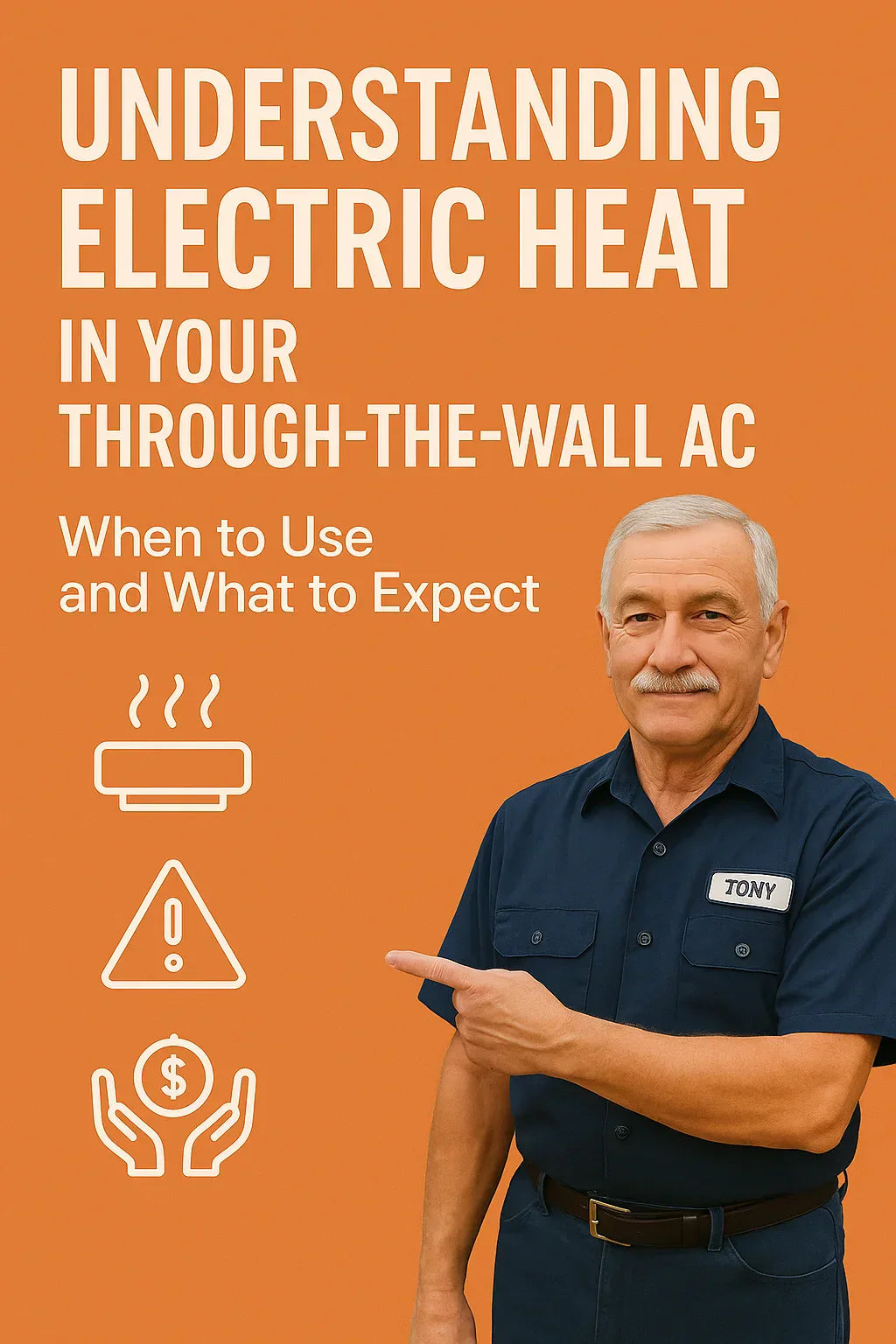🧊 Introduction: Heating with Your AC?
Many through-the-wall AC units, including the GE 12,000 BTU model, feature built-in electric heat for supplemental warmth during cooler months. But how effective is it, and when should you use it?
Tony says:
"Think of electric heat in your AC like a space heater with your air conditioner’s airflow. It’s for spot heating, not whole-home heating."
This guide covers:
-
How electric heat in AC units works
-
When to use it effectively
-
Energy use and cost considerations
-
Limitations and best practices
🔥 How Electric Heat Works in Your AC
Electric heat in through-the-wall ACs uses resistance heating:
-
Electric coils heat up as current passes through.
-
The unit’s fan blows air over these coils, distributing warm air into the room.
This method is straightforward but less energy-efficient than heat pumps or gas furnaces.
Reference: DOE Home Heating Basics
🌡️ When Should You Use Electric Heat?
✅ Spot heating: For a bedroom, office, or small living space needing extra warmth. ✅ Transitional seasons: In early fall or late spring when the central heat is off but you need light heating. ✅ Supplemental heating: To warm specific areas without heating the whole home. ✅ Emergency heating: If your primary heating system fails.
⚡ Energy Use and Cost Expectations
Electric resistance heating uses significantly more electricity than the cooling mode of your AC:
-
Typical heating mode power draw: 3,000–4,000 watts/hour.
-
Cooling mode draw: 900–1,500 watts/hour.
Example cost calculation:
-
At $0.15/kWh, running electric heat for 4 hours daily: 3,500 watts ÷ 1000 = 3.5 kW 3.5 kW x $0.15 = $0.525/hour $0.525 x 4 = $2.10/day $2.10 x 30 = $63/month for light use.
Key Point: Use sparingly for targeted heating to avoid high energy bills.
Reference: Energy.gov Estimating Appliance Energy Use
🚫 Limitations of Electric Heat in Through-the-Wall ACs
-
Not suitable for whole-home heating.
-
Less efficient than heat pumps or gas heating.
-
Heating effectiveness decreases in very cold rooms due to heat loss.
-
May require a dedicated 208/230V circuit to handle higher loads safely.
Tony’s Tip:
"If your room is drafty or poorly insulated, the unit will work harder and cost more to heat. Seal up leaks first."
✅ Best Practices for Using Electric Heat
✅ Seal windows and doors to retain heat. ✅ Use for supplemental heating only. ✅ Combine with ceiling fans on low to circulate warm air. ✅ Set thermostat reasonably (68°F–70°F) to avoid overuse. ✅ Monitor your electric panel to ensure it can handle the load. ✅ Regularly clean filters to ensure efficient airflow during heating.
Reference: Energy Star Heating Tips
🛠️ Maintenance Considerations During Heating Season
✅ Clean filters monthly to prevent airflow restriction. ✅ Inspect electrical connections for signs of wear. ✅ Check the wall sleeve and seals for drafts. ✅ Listen for unusual noises indicating fan or motor issues.
🧊 Alternatives if You Need More Heating Power
If your space requires regular heating beyond what electric heat can efficiently provide:
-
Consider a ductless mini-split heat pump for high efficiency.
-
Use a central heating system for whole-home warmth.
-
Invest in a high-efficiency portable heater for additional support.
Reference: DOE Heat Pump Guide
✅ Conclusion: Use Electric Heat Smartly
Electric heat in your GE 12,000 BTU through-the-wall AC is great for targeted, occasional heating but not for heavy, daily winter heating needs.
Tony’s Reminder:
"Use it when you need a quick warm-up in your room, but don’t expect it to replace your furnace."
In the next topic we will know more about: Noise Levels: How Loud Is a 12,000 BTU Through-the-Wall AC Really?







